Food Logistics: Serving CX on a Silver Platter

To provide five-star customer service, food distributors deliver a soup-to-nuts menu of solutions—from a basic online ordering system to point of sale digitization to automated routing.
Food distribution and transportation companies are helping retail, restaurant, and other companies boost performance and meet customers’ changing needs. These are critical capabilities, given the industry’s competitive and time-sensitive nature.
One example is the partnership between The Convenience Group (TCG) and its distributor Harbor Wholesale.
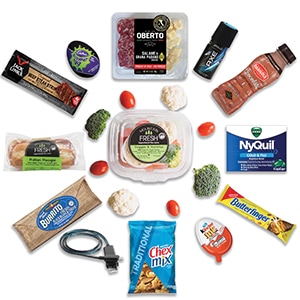
During the pandemic, food distributor Harbor Wholesale served its retail customers such as The Convenience Group by offering flexible product selections and solutions.
The convenience store industry used to be perceived as purveyors of “gas, smokes, and cokes.” No longer. Many stores are raising the bar and providing a range of quality groceries and food products, says Don Rhoads. He heads a chain of nine—soon to be 10—TCG superettes in Washington state that range from 3,000 to 5,000 square feet, and offer sandwiches, produce, groceries, and other items.
Like many other firms during the pandemic, TCG struggled to access supplies. “We had to pivot,” Rhoads says. Fortunately, Harbor Wholesale was able to provide flexible product selections and substitutions.
Also during this time, TCG accelerated its technology implementation. Technology tools from Harbor Hub, a program of Harbor Wholesale, now play major roles in several areas. For instance, a unified inventory and order management program provides Rhoads with a detailed breakdown of different products’ performance. “These tools provide a new and innovative way to look at our business,” he says.
TCG also leverages a system from Harbor Hub that suggests alternatives when products are out of stock.
“In food service, there are no rain checks,” says Clyde Coleman, senior director of operations with food service distributor PFG.
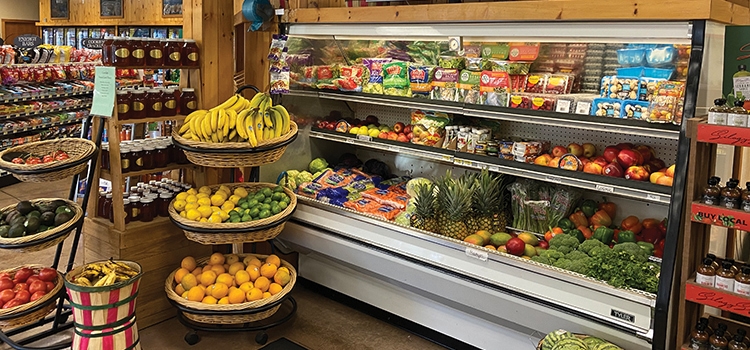
TCG operates and franchises neighborhood convenience stores throughout Washington and Oregon. It leverages technology from its distributor for inventory and order management.
Moreover, the business environment remains challenging. Distribution often is a “penny-profit business,” explains Justin Craigwell-Graham, managing director with L.E.K. Consulting.
Like many companies today, food distributors are confronting labor pressures, a truck driver shortage, and inflation. That’s prompting many to try to rein in costs, through steps such as competitively sourcing key products, better managing damaged goods, and addressing logistics and operations inefficiencies.
Some private equity firms are working to build national or supra-regional brands in the food distribution sector. Their goal is to gain efficiencies in several areas, including purchasing and routing configurations.
Also driving efficiencies is technology, which has become “table stakes” in the industry, Craigwell-Graham says. To remain competitive, distributors need at least a basic online ordering system, some digitization of their point-of-sale system, and an automated route or fleet optimization tool.
Even as food distributors and transportation providers focus on costs and technology, providing superior service and building strong client relationships remain critical. This requires trust, transparency, and an understanding of each other’s businesses.
Here are a few case studies of companies doing just that.
Doing Good for Customers and the Planet

Moving SGSY’s temperature-controlled products to markets across the country can be challenging. The company relies on transportation partners that provide excellent service and help meet customer needs.
The mission of So Good So You (SGSY), a manufacturer of premium, probiotic plant-based functional beverages, is to deliver “good to bodies while also doing good for the planet,” says Angel Cisneros, director of distribution and logistics with the B-Corp certified company. As one example, renewable energy powers its zero-waste facilities.
In line with its mission, SGSY strives to “deliver what our customers want, when they want it, and at the best possible price,” Cisneros says. That can be a challenging endeavor when moving temperature-controlled products via less-than-truckload (LTL) shipments to markets across the country.
SGSY relies on transportation partners that understand its goals and share its vision of providing excellent service through on-time arrivals, timely communication, technology, and the flexibility needed to meet changing customer needs.
For about one year, So Good So You has been working with Bay & Bay Transportation, a family-owned trucking and logistics company. “Bay & Bay strives to provide a personal level of service geared to solve our transportation challenges,” Cisneros says.
Among other services, Bay & Bay provides dry and refrigerated full truckload and LTL transportation to SGSY’s major retailers, says Levi Hall, account manager with Bay & Bay.
At the start of their partnership, Bay & Bay took over a single lane. SGSY had been working with another provider that wasn’t able to consistently meet on-time delivery metrics required by a big-box client, straining the relationship and leading to substantial fines, Hall says. Since Bay & Bay assumed control of the lane, it has consistently maintained a flawless on-time delivery record.
Bay & Bay also worked closely with SGSY’s transportation management system (TMS) service provider to enhance electronic communication through EDI connections. This reduced the labor hours needed to maintain proper information in the company’s system. The initiative also standardized data and procedures.
“Being a continuously growing company means having to react to the changes and demands our growth creates,” Cisneros says. “Bay & Bay’s ready-to-go mentality has been key to ensure we deliver what our customers want when they want it.”
Leveraging a Rolling Warehouse
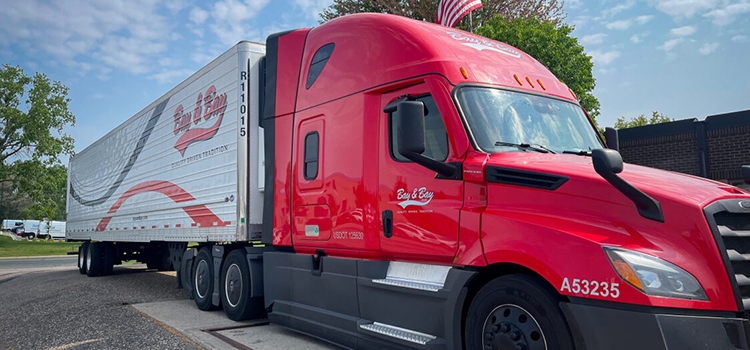
Bay & Bay provides dry and refrigerated full truckload and LTL transportation to SGSY’s major retailers.
Bartolotta LLC buys fresh produce, typically from California or Arizona, and transports it to the Northeastern U.S. About 15% of shipments head to retail companies, 25% to processors, and 60% to wholesalers, says Kevin Bartolotta, president.
The company partners with Radiant Global Logistics for several services, including its ability to provide rail cars that can act as “rolling warehouses,” for purchases that haven’t yet been re-sold, Bartolotta says.
While the ability to use trains for rolling inventory is a small piece of Radiant’s services, it can be an important one. “Produce is a commodities market, and Bartolotta often can read the market and forecast when prices will rise,” says Debra Sanford, Radiant’s vice president, sales and pricing.
Bartolotta can make a purchase, locking in a price. Within several days, the same load might be sold for significantly more.
Rail, although typically not as fast as over-the-road travel, is less likely to be impacted by weather delays, and the rates and schedules tend to be more stable, Bartolotta says. In addition, it’s possible to track shipments and monitor temperatures and other features.
“Radiant helped me expand my business by offering perks not available with over-the-road shipments,” Bartolotta says.
Streamlining LTL
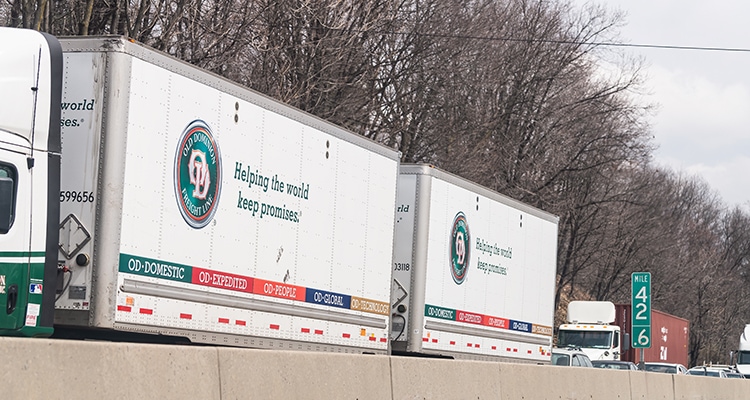
As one of Performance Food Group’s approved LTL carriers, Old Dominion Freight Line provides key benefits such as delivering on time, coordinating delivery schedules, and transporting specialty products on demand.
For the past 13 years, PFG, a food service distributor, has used Old Dominion Freight Lines (ODFL) for LTL services and occasional final-mile deliveries. “ODFL has been instrumental in helping PFG streamline LTL services,” Coleman says.
Old Dominion provides direct LTL service to more than 99% of the country. As an approved LTL provider for PFG, ODFL offers several key services. One is ensuring products land at each PFG location consistently and reliably. Another is coordinating delivery schedules between PFG’s distribution center or inbound receiving manager and ODFL’s local service center operations team.
The benefits to PFG and its vendor base include reduced yard congestion and labor allocation, as well as an improved ability to serve customers. Many PFG vendors provide specialty products that typically aren’t inventoried in large quantities. Old Dominion can transport and deliver these on demand, says Ed Garner, director of national accounts for ODFL.
ODFL also provides visibility through several integrated systems. “From shipment pickup to final delivery, these data points are shared with both the shipper and the consignee via multiple interfaces including EDI, API, or other real-time methods,” Garner says.
“As we have expanded over the years, ODFL has kept up with our growing demands and has been able to maintain service levels,” Coleman says.
An Appetite for Technology
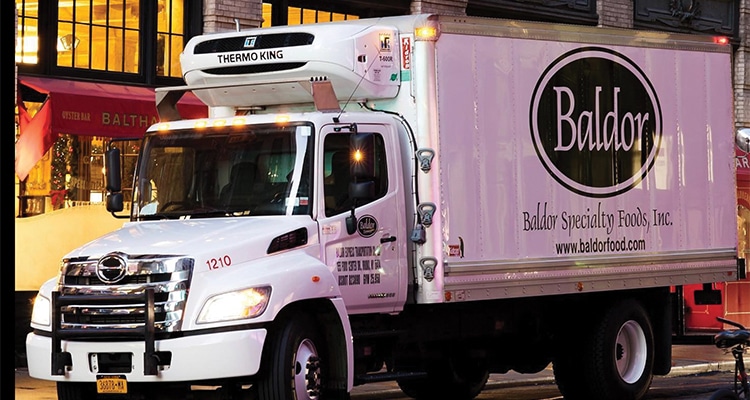
A tactical routing solution and big data portal provide visibility into Baldor’s delivery routes.
Technology impacts many industries, including the food distribution sector. Consider DSW Distribution, which operates more than 6.5 million cubic feet of warehouse space in Southern California that is temperature-controlled, organic-certified, and licensed for alcoholic beverages and pharmaceuticals, among other features.
The company’s initiative to convert its Food Safety Manual System (FSMS) from paper to paperless, was an “intense exercise,” says Brad Thayer, president and chief executive officer of DSW. The paper-based FSMS had taken decades to develop and consumed a roomful of binders.
To accomplish this shift, DSW leveraged a food safety management software system from Certdox. The new FSMS is now securely live on phones, tablets, and laptops—all of which feed into a secure platform.
The benefits include increased productivity, faster reporting, and chain-of-custody time-stamped electronic records. One month after going live with Certdox, DSW scored a perfect 100 on a Safe Quality Food (SQF) Level 2 Certification Audit.
Another food distribution company embracing technology is Baldor Specialty Foods, one of the largest distributors of premium fresh produce, specialty foods and other products in the Northeast and Mid-Atlantic regions. Baldor serves more than 13,000 food service, retail, and corporate accounts, including three-quarters of the Michelin-star restaurants in its regions, says Seth Gottlieb, the company’s senior vice president, logistics.
During the pandemic, when the company urgently needed to shift from restaurants to home delivery, Baldor reached out to Ortec, a supplier of mathematical optimization software. Ortec’s Tactical Routing platform enabled a quick and effective pivot. The Routing and Dispatch platform helps Baldor’s routing teams continuously improve their on-time record by using analytics configured within the Ortec Big Data Portal, which includes historical stop service times, along with other order-level data.
Baldor’s routing, analytics, and technology teams regularly collaborate with their counterparts at Ortec. The two companies also are working together as Baldor develops its strategic three-year roadmap.
“We’re fortunate to have a relationship that allows us to come to our partners with our goals for the years ahead and work together on collaborative solutions that maximize our use of the platform,” Gottlieb says.
